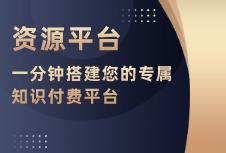今天给各位分享java语言词法分析器的知识,其中也会对java中文语义分析工具进行解释,如果能碰巧解决你现在面临的问题,别忘了关注本站,现在开始吧!
本文目录一览:
1、java语言中的scanner是什么意思用来干嘛2、如何用JAVA编写词法分析器程序3、怎么用java写一个词法分析器4、请用JAVA编程输入一个语句进行词法分析5、用java做一个简单的词法分析器
java语言中的scanner是什么意思用来干嘛
scanner是一个用于扫描输入文本的新的实用程序。它是以前的StringTokenizer和Matcher类之间的某种结合。
由于任何数据都必须通过同一模式的捕获组检索或通过使用一个索引来检索文本的各个部分。于是可以结合使用正则表达式和从输入流中检索特定类型数据项的方法。这样,除了能使用正则表达式之外,Scanner类还可以任意地对字符串和基本类型(如int和double)的数据进行分析。借助于Scanner,可以针对任何要处理的文本内容编写自定义的语法分析器。例如:
public class NextTest{
public static void main(String[] args) {
String s1,s2;
Scanner sc=new Scanner(System.in);
System.out.print(“请输入第一个字符串:”);
s1=sc.nextLine();
System.out.print(“请输入第二个字符串:”);
s2=sc.next();
System.out.println(“输入的字符串是:”+s1+” “+s2);
}
}
运行结果是:
请输入第一个字符串:home
请输入第二个字符串:work
输入的字符串是:home work
扩展资料:
scanner中关于nextInt()、next()和nextLine()的理解
nextInt(): it only reads the int value, nextInt() places the cursor(光标) in the same line after reading the input.(nextInt()只读取数值,剩下”\n”还没有读取,并将cursor放在本行中)
next(): read the input only till the space. It can’t read two words separated by space. Also, next() places the cursor in the same line after reading the input.(next()只读空格之前的数据,并且cursor指向本行)
next() 方法遇见第一个有效字符(非空格,非换行符)时,开始扫描,当遇见第一个分隔符或结束符(空格或换行符)时,结束扫描,获取扫描到的内容,即获得第一个扫描到的不含空格、换行符的单个字符串。
nextLine(): reads input including space between the words (that is, it reads till the end of line \n). Once the input is read, nextLine() positions the cursor in the next line.
nextLine()时,则可以扫描到一行内容并作为一个字符串而被获取到。
如何用JAVA编写词法分析器程序
我也做过这个作业
package source;
import java.util.LinkedList;
public class LexicalAnalysis
{
//私有变量声明
private LinkedListWord optr = new LinkedListWord();
private String exp;
//词法分析
public LinkedListWord lexical_analysis(String exp)
{
char ch = ‘\0’; //当前文件指针内容
int index = 0; //文件指针
StringBuffer strToken = new StringBuffer(“”);
//扫描处理字符串
while(true)
{
ch = exp.charAt(index);
index++;
//标识符(字母开头,数字或字符组成)
if(Character.isLetter(ch))
{
while(Character.isLetter(ch) || Character.isDigit(ch))
{
strToken.append(ch);
ch = exp.charAt(index);
index++;
}
index–;
String str = strToken.toString();
if(str.equals(“if”))
optr.add(new Word(str, 13));
else if(str.equals(“else”))
optr.add(new Word(str, 14));
else if(str.equals(“then”))
optr.add(new Word(str, 15));
else
optr.add(new Word(str, 26));
}
//数字
else if(Character.isDigit(ch))
{
while(Character.isDigit(ch))
{
strToken.append(ch);
ch = exp.charAt(index);
index++;
}
index–;
optr.add(new Word(strToken.toString(), 26));
}
//加号或自加
else if(ch == ‘+’)
{
ch = exp.charAt(index);
index++;
if(ch == ‘+’)
optr.add(new Word(“++”, 21));
else if(ch == ‘=’)
optr.add(new Word(“+=”, 16));
else
{
index–;
optr.add(new Word(“+”, 19));
}
}
//加号或自加
else if(ch == ‘-‘)
{
ch = exp.charAt(index);
index++;
if(ch == ‘-‘)
optr.add(new Word(“–“, 21));
else if(ch == ‘=’)
optr.add(new Word(“-=”, 16));
else
{
index–;
optr.add(new Word(“-“, 19));
}
}
//乘法或乘幂
else if(ch == ‘*’)
{
ch = exp.charAt(index);
index++;
if(ch == ‘*’)
optr.add(new Word(“**”, 20));
else if(ch == ‘=’)
optr.add(new Word(“*=”, 16));
else
{
index–;
optr.add(new Word(“*”, 20));
}
}
//除法或注释
else if(ch == ‘/’)
{
ch = exp.charAt(index);
index++;
//多行注释
if(ch == ‘*’)
{
while(true)
{
ch = exp.charAt(index);
index++;
if(ch == ‘*’)
{
ch = exp.charAt(index);
index++;
if(ch == ‘/’) break;
else if(ch == ‘\n’)
{
exp = Input.newLine();
index = 0;
ch = exp.charAt(index);
index++;
}
else index–;
}
else if(ch == ‘#’)
{
int tIndex = index – 1;
if(exp.length() tIndex+9)
{
String end = exp.substring(tIndex, tIndex+9);
if(end.equals(“#?e_N_d?#”)) break;
}
else
{
System.out.println(“非法符号\’#\’后的语句忽略!”);
exp = Input.newLine();
index = 0;
break;
}
}
else if(ch == ‘\n’)
{
exp = Input.newLine();
index = 0;
}
}
}
//单行注释
else if(ch == ‘/’)
break;
else if(ch == ‘=’)
optr.add(new Word(“/=”, 16));
else
{
index–;
optr.add(new Word(“/”, 20));
}
}
//大于或大于等于或右移
else if(ch == ”)
{
ch = exp.charAt(index);
index++;
if(ch == ‘=’)
optr.add(new Word(“=”, 18));
else if(ch == ”)
optr.add(new Word(“”, 20));
else
{
index–;
optr.add(new Word(“”, 18));
}
}
//小于或小于等于或左移
else if(ch == ”)
{
ch = exp.charAt(index);
index++;
if(ch == ‘=’)
optr.add(new Word(“=”, 18));
else if(ch == ”)
optr.add(new Word(“”, 20));
else
{
index–;
optr.add(new Word(“”, 18));
}
}
//赋值或等于
else if(ch == ‘=’)
{
ch = exp.charAt(index);
index++;
if(ch == ‘=’)
optr.add(new Word(“==”, 18));
else
{
index–;
optr.add(new Word(“=”, 16));
}
}
//或运算按位或
else if(ch == ‘|’)
{
ch = exp.charAt(index);
index++;
if(ch == ‘|’)
optr.add(new Word(“||”, 17));
else
{
index–;
optr.add(new Word(“|”, 20));
}
}
//与运算
else if(ch == ”)
{
ch = exp.charAt(index);
index++;
if(ch == ”)
optr.add(new Word(“”, 17));
else
{
index–;
optr.add(new Word(“”, 20));
}
}
//非运算或不等于
else if(ch == ‘!’)
{
ch = exp.charAt(index);
index++;
if(ch == ‘=’)
optr.add(new Word(“!=”, 18));
else
{
index–;
optr.add(new Word(“!”, 21));
}
}
//按位亦或
else if(ch == ‘^’)
optr.add(new Word(“^”, 20));
//取模运算
else if(ch == ‘%’)
optr.add(new Word(“%”, 20));
//左括号
else if(ch == ‘(‘)
optr.add(new Word(“(“, 22));
//右括号
else if(ch == ‘)’)
optr.add(new Word(“)”, 23));
//左大括号
else if(ch == ‘{‘)
optr.add(new Word(“{“, 24));
//右大括号
else if(ch == ‘}’)
optr.add(new Word(“}”, 25));
//结束扫描标志为:#?e_N_d?#
else if(ch == ‘\n’)
{
break;
}
else if(ch == ‘#’)
{
int tIndex = index – 1;
if(exp.length() tIndex+9)
{
String end = exp.substring(tIndex, tIndex+9);
if(end.equals(“#?e_N_d?#”))
{
optr.add(new Word(“#”, 27));
break;
}
}
else
{
System.out.println(“非法符号\’#\’后的语句忽略!”);
optr.add(new Word(“#”, 27));
break;
}
}
//清空扫描串
strToken.setLength(0);
}
return optr;
}
}

怎么用java写一个词法分析器
首先看下我们要分析的代码段如下:
输出结果如下:
输出结果(a).PNG
输出结果(b).PNG
输出结果(c).PNG
括号里是一个二元式:(单词类别编码,单词位置编号)
代码如下:
?
1234567891011121314
package Yue.LexicalAnalyzer; import java.io.*; /* * 主程序 */public class Main { public static void main(String[] args) throws IOException { Lexer lexer = new Lexer(); lexer.printToken(); lexer.printSymbolsTable(); }}
?
123456789101112131415161718192021222324252627282930313233343536373839404142434445464748495051525354555657585960616263646566676869707172737475767778798081828384858687888990919293949596979899100101102103104105106107108109110111112113114115116117118119120121122123124125126127128129130131132133134135136137138139140141142143144145146147148149150151152153154155156157158159160161162163164165166167168169170171172173174175176177178179180181182183184185186187188189190191192193194195196197198199200201202203204205206207208209210211212213214215216217218219220221222223224225226227228229230231232233234235236237238239240241242243244245246247248249250251252253254255256257258259260261262263264265266267268269270271272273274275276277278279280281282283
package Yue.LexicalAnalyzer; import java.io.*;import java.util.*; /* * 词法分析并输出 */public class Lexer { /*记录行号*/ public static int line = 1; /*存放最新读入的字符*/ char character = ‘ ‘; /*保留字*/ HashtableString, KeyWord keywords = new HashtableString, KeyWord(); /*token序列*/ private ArrayListToken tokens = new ArrayListToken(); /*符号表*/ private ArrayListSymbol symtable = new ArrayListSymbol(); /*读取文件变量*/ BufferedReader reader = null; /*保存当前是否读取到了文件的结尾*/ private Boolean isEnd = false; /* 是否读取到文件的结尾 */ public Boolean getReaderState() { return this.isEnd; } /*打印tokens序列*/ public void printToken() throws IOException { FileWriter writer = new FileWriter(“E:\\lex.txt”); System.out.println(“词法分析结果如下:”); System.out.print(“杜悦-2015220201031\r\n\n”); writer.write(“杜悦-2015220201031\r\n\r\n”); while (getReaderState() == false) { Token tok = scan(); String str = “line ” + tok.line + “\t(” + tok.tag + “,” + tok.pos + “)\t\t” + tok.name + “: ” + tok.toString() + “\r\n”; writer.write(str); System.out.print(str); } writer.flush(); } /*打印符号表*/ public void printSymbolsTable() throws IOException { FileWriter writer = new FileWriter(“E:\\symtab1.txt”); System.out.print(“\r\n\r\n符号表\r\n”); System.out.print(“编号\t行号\t名称\r\n”); writer.write(“符号表\r\n”); writer.write(“编号 ” + “\t行号 ” + “\t名称 \r\n”); IteratorSymbol e = symtable.iterator(); while (e.hasNext()) { Symbol symbol = e.next(); String desc = symbol.pos + “\t” + symbol.line + “\t” + symbol.toString(); System.out.print(desc + “\r\n”); writer.write(desc + “\r\n”); } writer.flush(); } /*打印错误*/ public void printError(Token tok) throws IOException{ FileWriter writer = new FileWriter(“E:\\error.txt”); System.out.print(“\r\n\r\n错误词法如下:\r\n”); writer.write(“错误词法如下:\r\n”); String str = “line ” + tok.line + “\t(” + tok.tag + “,” + tok.pos + “)\t\t” + tok.name + “: ” + tok.toString() + “\r\n”; writer.write(str); } /*添加保留字*/ void reserve(KeyWord w) { keywords.put(w.lexme, w); } public Lexer() { /*初始化读取文件变量*/ try { reader = new BufferedReader(new FileReader(“E:\\输入.txt”)); } catch (IOException e) { System.out.print(e); } /*添加保留字*/ this.reserve(KeyWord.begin); this.reserve(KeyWord.end); this.reserve(KeyWord.integer); this.reserve(KeyWord.function); this.reserve(KeyWord.read); this.reserve(KeyWord.write); this.reserve(KeyWord.aIf); this.reserve(KeyWord.aThen); this.reserve(KeyWord.aElse); } /*按字符读*/ public void readch() throws IOException { character = (char) reader.read(); if ((int) character == 0xffff) { this.isEnd = true; } } /*判断是否匹配*/ public Boolean readch(char ch) throws IOException { readch(); if (this.character != ch) { return false; } this.character = ‘ ‘; return true; } /*数字的识别*/ public Boolean isDigit() throws IOException { if (Character.isDigit(character)) { int value = 0; while (Character.isDigit(character)) { value = 10 * value + Character.digit(character, 10); readch(); } Num n = new Num(value); n.line = line; tokens.add(n); return true; } else return false; } /*保留字、标识符的识别*/ public Boolean isLetter() throws IOException { if (Character.isLetter(character)) { StringBuffer sb = new StringBuffer(); /*首先得到整个的一个分割*/ while (Character.isLetterOrDigit(character)) { sb.append(character); readch(); } /*判断是保留字还是标识符*/ String s = sb.toString(); KeyWord w = keywords.get(s); /*如果是保留字的话,w不应该是空的*/ if (w != null) { w.line = line; tokens.add(w); } else { /*否则就是标识符,此处多出记录标识符编号的语句*/ Symbol sy = new Symbol(s); Symbol mark = sy; //用于标记已存在标识符 Boolean isRepeat = false; sy.line = line; for (Symbol i : symtable) { if (sy.toString().equals(i.toString())) { mark = i; isRepeat = true; } } if (!isRepeat) { sy.pos = symtable.size() + 1; symtable.add(sy); } else if (isRepeat) { sy.pos = mark.pos; } tokens.add(sy); } return true; } else return false; } /*符号的识别*/ public Boolean isSign() throws IOException { switch (character) { case ‘#’: readch(); AllEnd.allEnd.line = line; tokens.add(AllEnd.allEnd); return true; case ‘\r’: if (readch(‘\n’)) { readch(); LineEnd.lineEnd.line = line; tokens.add(LineEnd.lineEnd); line++; return true; } case ‘(‘: readch(); Delimiter.lpar.line = line; tokens.add(Delimiter.lpar); return true; case ‘)’: readch(); Delimiter.rpar.line = line; tokens.add(Delimiter.rpar); return true; case ‘;’: readch(); Delimiter.sem.line = line; tokens.add(Delimiter.sem); return true; case ‘+’: readch(); CalcWord.add.line = line; tokens.add(CalcWord.add); return true; case ‘-‘: readch(); CalcWord.sub.line = line; tokens.add(CalcWord.sub); return true; case ‘*’: readch(); CalcWord.mul.line = line; tokens.add(CalcWord.mul); return true; case ‘/’: readch(); CalcWord.div.line = line; tokens.add(CalcWord.div); return true; case ‘:’: if (readch(‘=’)) { readch(); CalcWord.assign.line = line; tokens.add(CalcWord.assign); return true; } break; case ”: if (readch(‘=’)) { readch(); CalcWord.ge.line = line; tokens.add(CalcWord.ge); return true; } break; case ”: if (readch(‘=’)) { readch(); CalcWord.le.line = line; tokens.add(CalcWord.le); return true; } break; case ‘!’: if (readch(‘=’)) { readch(); CalcWord.ne.line = line; tokens.add(CalcWord.ne); return true; } break; } return false; } /*下面开始分割关键字,标识符等信息*/ public Token scan() throws IOException { Token tok; while (character == ‘ ‘) readch(); if (isDigit() || isSign() || isLetter()) { tok = tokens.get(tokens.size() – 1); } else { tok = new Token(character); printError(tok); } return tok; }}
请用JAVA编程输入一个语句进行词法分析
我最近正在学编译原理,我有c语言实现的词法分析程序,不知可不可以,识别的是TEST语言的单词。
#includestdio.h
#includectype.h
#includestring.h
#define keywordSum 8
char * keyword[keywordSum] = {“do”, “else”, “for”, “if”, “int”, “read”, “while”, “write”};
char singleword[50] = “+-*(){};,:”;
char doubleword[10] = “=!|”;
char Scanin[300], Scanout[300];
FILE * fin, * fout;
int binaryFind(int low, int high, char * c1, char ** c2) {
int mid;
if(low high) return -1;
mid = (low+high)/2;
if(strcmp(c1, c2[mid]) == 0) return mid;
else if(strcmp(c1, c2[mid]) 0) return binaryFind(mid+1, high, c1, c2);
else return binaryFind(low, mid-1, c1, c2);
}
int TESTscan() {
char ch, token[40];
int es = 0, j, n;
printf(“请输入源文件名(包括路径):”);
scanf(“%s”, Scanin);
printf(“请输入词法分析输出文件名(包括路径):”);
scanf(“%s”, Scanout);
if((fin=fopen(Scanin, “r”)) == NULL) {
printf(“\n打开词法分析输入文件出错!\n”);
return 1;
}
if((fout=fopen(Scanout, “w”)) == NULL) {
printf(“\n创建词法分析输出文件出错!\n”);
return 2;
}
//printf(“%c”, getc(fin));
ch = getc(fin);
while(ch != EOF) {
while(ch==’ ‘ || ch==’\n’ || ch==’\t’) {
ch = getc(fin);
}
if(isalpha(ch)) { //标识符
token[0] = ch;
j = 1;
ch = getc(fin);
while(isalnum(ch)) { //判断当前字符是否是字母或数字
token[j++] = ch;
ch = getc(fin);
}
token[j] = ‘\0’;
//printf(“%s”, token);
n = binaryFind(0, keywordSum-1, token, keyword);
if(n 0 ) {
fprintf(fout, “%s\t%s\n”, “ID”, token);
} else {
fprintf(fout, “%s\t%s\n”, token, token);
}
} else if(isdigit(ch)) {//数字
token[0] = ch;
j = 1;
ch = getc(fin);
while(isdigit(ch)) {
token[j++] = ch;
ch = getc(fin);
}
token[j] = ‘\0’;
fprintf(fout, “%s\t%s\n”, “NUM”, token);
} else if(strchr(singleword, ch) 0) { //singleword
token[0] = ch;
token[1] = ‘\0’;
ch = getc(fin);
fprintf(fout, “%s\t%s\n”, token, token);
} else if(strchr(doubleword, ch) 0) { //doubleword
token[0] = ch;
ch = getc(fin);
if(ch==’=’ (token[0]==”||token[0]==” || token[0] == ‘!’)) {
token[1] = ch;
token[2] = ‘\0’;
ch = getc(fin);
} else if((ch==”)||(ch==’|’)||(ch==’=’) ch==token[0]) {
token[1] = ch;
token[2] = ‘\0’;
ch = getc(fin);
} else {
token[1] = ‘\0’;
}
fprintf(fout, “%s\t%s\n”, token, token);
} else if(ch == ‘/’) { //注释
ch = getc(fin);
if(ch == ‘*’) {
char ch1;
ch1 = getc(fin);
do {
ch = ch1;
ch1 = getc(fin);
} while((ch!=’*’||ch1!=’/’) ch1!=EOF);
ch = getc(fin);
} else {
token[0] = ‘/’;
token[1] = ‘\0’;
fprintf(fout, “%s\t%s\n”, token, token);
}
} else {
token[0] = ch;
token[1] = ‘\0’;
ch = getc(fin);
es = 3;
fprintf(fout, “%s\t%s\n”, “ERROR”, token);
}
}
fclose(fin);
fclose(fout);
return es;
}
void main() {
int es = 0;
es = TESTscan();
if(es 0) {
printf(“词法分析有错, 编译停止!\n”);
} else {
printf(“词法分析成功!\n”);
}
}
用java做一个简单的词法分析器
网上有个antlr-2.7.5-chinese的文档,你先把基本概念看懂先,否则给你例子也看不懂,去博客园找找几篇博客看看,静下心来看,我这两天也在研究,写出来后再把g文件给你
java语言词法分析器的介绍就聊到这里吧,感谢你花时间阅读本站内容,更多关于java中文语义分析工具、java语言词法分析器的信息别忘了在本站进行查找喔。

 微信扫一扫
微信扫一扫  支付宝扫一扫
支付宝扫一扫 



